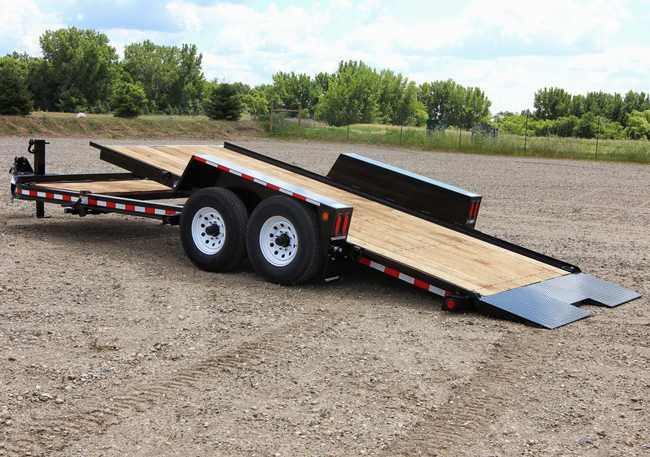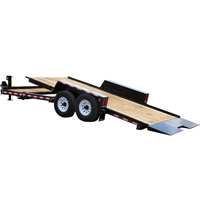Many construction organizations choose to hire construction equipment from equipment rental companies since it is frequently a more cost-effective option. If you work for one of these construction businesses, you don’t own your own equipment and may need to have your borrowed equipment moved to or from your site. Shipping construction equipment might appear to be a difficult process due to its size and weight, but don’t panic. There are several methods available for shipping and moving equipment. Here’s a list of some of the finest ways to transfer your equipment, as well as some pointers on how to accomplish it.
- Flatbed Trailer – Flatbed trailers are perhaps the most typical means to move large products. They are utilized throughout the country and may thus be found practically anywhere. Most flatbed trailers can transport several dozen tons, but you should double-check how much your equipment weighs and how much weight the flatbed in issue can handle before making any decisions. Flatbeds come in a variety of sizes and make loading and unloading equipment a breeze. A flatbed trailer can move most items due to its adaptability.
- Towing – You may be able to have equipment towed if it is only a short distance away. You’ll want to be sure the car you intend to tow is capable of the job and has all of the appropriate equipment. For example, you may need to have the tires on the towing vehicle tested to ensure they can handle the additional weight of your equipment. You may also consider hiring a towing business, which will have a wide range of tow vehicles capable of handling various sorts of equipment.
- Specialized Trailers – If you have any enormous or extremely heavy equipment, you may need to consider renting a specialist trailer to transport it. A standard flatbed trailer might not work with what you’re attempting to carry, so you could need a step deck or a double drop trailer – both of these are flatbed trailers with multiple levels built in so that you can easily fit any sort of equipment into the trailer’s bed.
It may appear that double-checking the security of the equipment is common sense, but it cannot be overstated. The last thing you want is for a major piece of equipment to go loose during transportation. It might easily fall off and severely injure or harm someone. Either of these events would be disastrous for a business, but they are readily avoidable by securing the load as firmly as possible. You should also evaluate the route’s traffic and weather conditions as you prepare to secure and transport your equipment. Some weather and traffic conditions necessitate securing the equipment even more tightly than usual.
Some states and areas have standards and restrictions limiting the amount of weight that may be transported at one time or the kind of vehicles that can be used for transportation. You should be aware of any legal limitations that may be in place along the route in order to avoid receiving a penalty. If you have any queries regarding prospective rules or limits that may be legally imposed in a certain location, you can seek assistance from the local governing authorities.
It may appear that shipping and transferring big equipment is an insurmountable undertaking, but it is not. These transportation strategies and methods can assist you in delivering all of your huge equipment in the most convenient manner imaginable. Always keep in mind that there are several possibilities!










